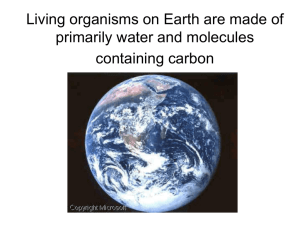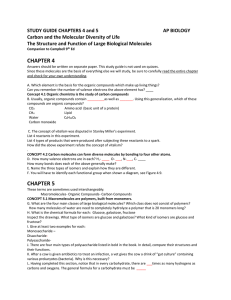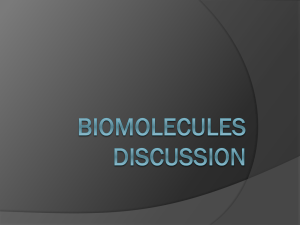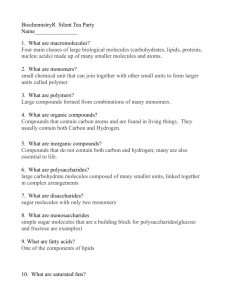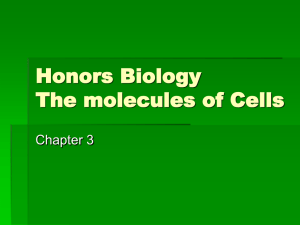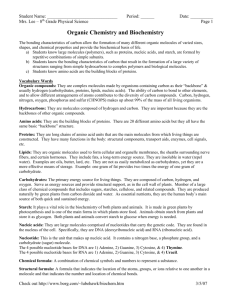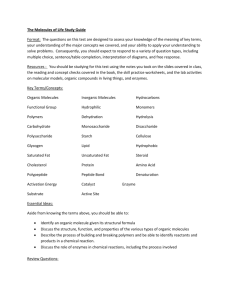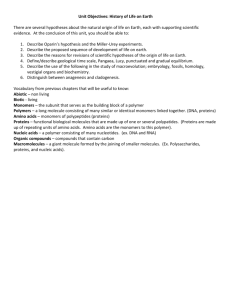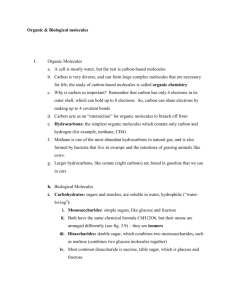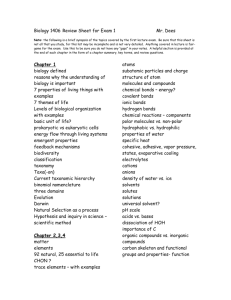Ch. 3 - Ltcconline.net
advertisement
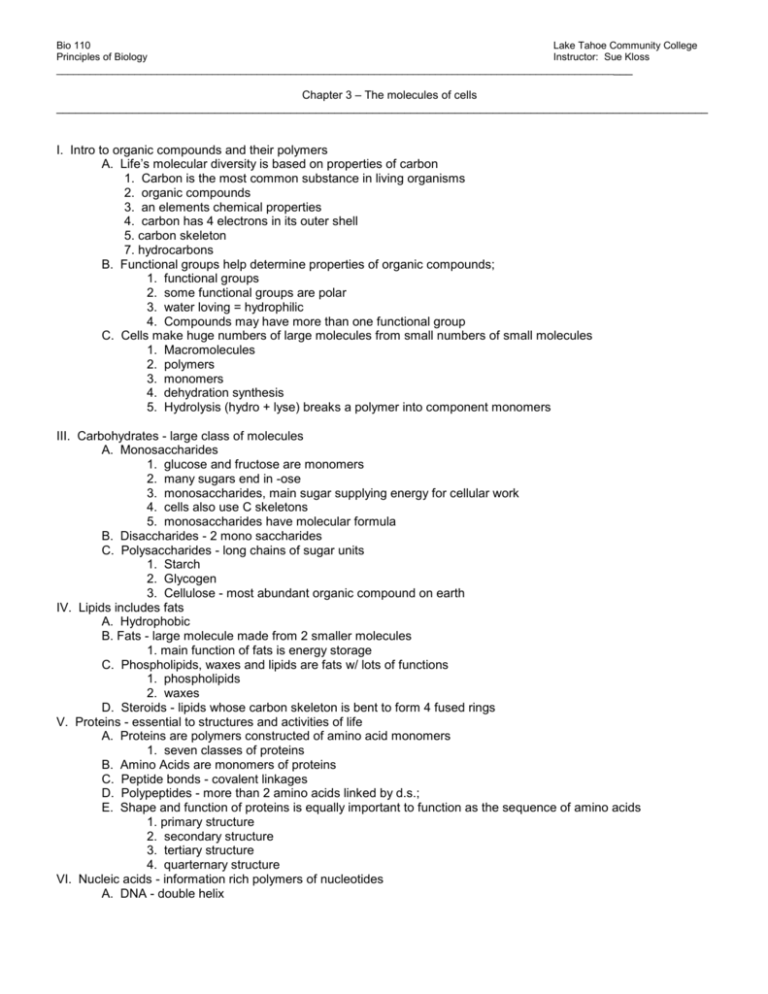
Bio 110 Lake Tahoe Community College Principles of Biology Instructor: Sue Kloss _______________________________________________________________________________________________________ Chapter 3 – The molecules of cells _______________________________________________________________________________________________________ I. Intro to organic compounds and their polymers A. Life’s molecular diversity is based on properties of carbon 1. Carbon is the most common substance in living organisms 2. organic compounds 3. an elements chemical properties 4. carbon has 4 electrons in its outer shell 5. carbon skeleton 7. hydrocarbons B. Functional groups help determine properties of organic compounds; 1. functional groups 2. some functional groups are polar 3. water loving = hydrophilic 4. Compounds may have more than one functional group C. Cells make huge numbers of large molecules from small numbers of small molecules 1. Macromolecules 2. polymers 3. monomers 4. dehydration synthesis 5. Hydrolysis (hydro + lyse) breaks a polymer into component monomers III. Carbohydrates - large class of molecules A. Monosaccharides 1. glucose and fructose are monomers 2. many sugars end in -ose 3. monosaccharides, main sugar supplying energy for cellular work 4. cells also use C skeletons 5. monosaccharides have molecular formula B. Disaccharides - 2 mono saccharides C. Polysaccharides - long chains of sugar units 1. Starch 2. Glycogen 3. Cellulose - most abundant organic compound on earth IV. Lipids includes fats A. Hydrophobic B. Fats - large molecule made from 2 smaller molecules 1. main function of fats is energy storage C. Phospholipids, waxes and lipids are fats w/ lots of functions 1. phospholipids 2. waxes D. Steroids - lipids whose carbon skeleton is bent to form 4 fused rings V. Proteins - essential to structures and activities of life A. Proteins are polymers constructed of amino acid monomers 1. seven classes of proteins B. Amino Acids are monomers of proteins C. Peptide bonds - covalent linkages D. Polypeptides - more than 2 amino acids linked by d.s.; E. Shape and function of proteins is equally important to function as the sequence of amino acids 1. primary structure 2. secondary structure 3. tertiary structure 4. quarternary structure VI. Nucleic acids - information rich polymers of nucleotides A. DNA - double helix B. RNA C. genes - stretches of DNA encoding for a particular protein or polypeptide D. nucleotides 1. 5 carbon sugar 2. phosphate group 3. nitrogenous bases always pair up as A and T, C and G (A and U in RNA) 4. double helix in full dna strand Homework Questions/Lesson Objectives Chapter 3 Due Wednesday Wk 2 1. Explain why carbon is unparalleled in its ability to form large, diverse molecules. 2. Define organic compounds, hydrocarbons a carbon skeleton and an isomer. 3. Describe the properties of and distinguish between the 4 functional groups of organic molecules covered in class. 4. List the 4 classes of macromolecules, explain the relationship between monomers and polymers, and compare the processes of dehydration synthesis and hydrolysis. 5. Describe the functions, properties and types of carbohydrate molecules. Due Monday Wk 3 6. Describe the functions, properties and types of lipid molecules. 7. Describe the structures, functions, properties and types of proteins, including levels of structure. 8. Compare the structures and functions of DNA and RNA.

